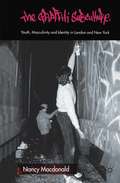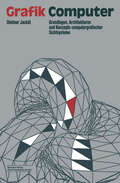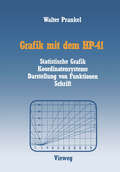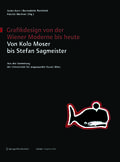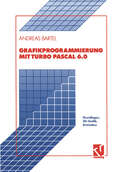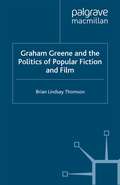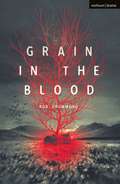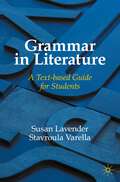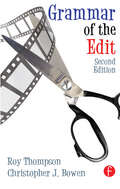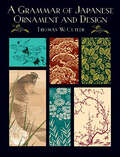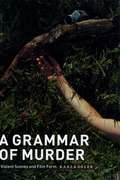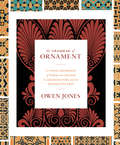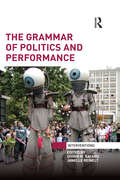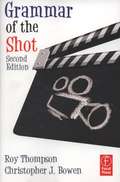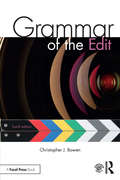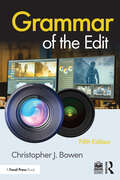- Table View
- List View
Graffiti Planet: The Best Graffiti from Around the World
by Alan KetA celebration of the creativity of graffiti artists from all over the world.Ever controversial, graffiti or street art has become a significant art form and continues to evolve and transform urban landscapes in cities around the globe.Compiled by an insider on the New York graffiti scene, KET, this is a collection of the work of some of the world’s top graffiti artists.Showcases work from artists such as Banksy (London), Can2 (Munich), T-Kid (New York), Os Gemeos (Sao Paolo) and many more.Graffiti Planet is a perfect companion to this dynamic and vibrant art form.
The Graffiti Subculture: Youth, Masculinity and Identity in London and New York
by N. MacdonaldThis book is the most extensive contribution to our understanding of the graffiti subculture to date. Using insights from ethnographic research conducted in London and New York, the author explores the varying ways young men use graffiti to construct masculinity, claim power and establish independence from the institutions which define and often limit them as young people. Forging a link between subcultural practice and identity construction, this book will be essential reading for anyone interested in new understandings of youth and their subcultures.
Grafik-Computer: Grundlagen, Architekturen und Konzepte computergrafischer Sichtsysteme
by Dietmar JackelDiese Monographie beschreibt den Stand der Technik der computergrafischen Sichtsysteme und deren Grundlagen in einer umfassenden und kompakten Form. Zentrales Thema sind die sogenannten Realzeit-Displays, deren Architekturen und Funktionsprinzipien anhand mehrerer signifikanter Beispiele ausführlich diskutiert werden. In diesem Zusammenhang werden auch die Algorithmen der Visualisierungsprozesse insoweit behandelt, wie sie zum Verständnis der Architekturkonzepte erforderlich sind. Zu den weiteren Themenkomplexen gehören auch jene Architekturen von Sichtsystemen, die speziell für die Visualisierung von multidimensionalen Datenfeldern geeignet sind. Die Monographie dient vor allem Entwicklungsingenieuren, die sich in kurzer Zeit in das Themengebiet einarbeiten wollen. Darüber hinaus ist das Buch auch für Studenten der Elektrotechnik und der Informatik gedacht, da es für beide Interessentengruppen die Verbindungen zwischen den Bereichen der Rechnerarchitektur und der allgemeinen Computergrafik in verständlicher Form aufzeigt.
Grafik mit dem HP-41: Statistische Grafik Koordinatensysteme Darstellung von Funktionen Schrift
by Walter PrankelComputer erleichtern in Wirtschaft, Wissenschaft und Technik Analyse, Oberblick und Entscheidung. Besonders vorteilhaft ist es, wenn das anfallende Zahlenmaterial gleich grafisch veranschaulicht werden kann. Das wird in idealer Weise durch die Kombination Computer - Plotter ermöglicht. Sie entlastet von den meist einfachen, dennoch aber mühevollen Rechen-, Zeichen-und Beschriftungsarbeiten, die für präzise und präsentable Grafiken unabdingbar sind. Die hier vorgestellte und in Form von Strichcodes verfügbar gemachte Software erlaubt die Plottersteuerung mit dem leistungsfähigen und breit eingeführten Taschencomputer HP 41. Sie macht damit die computergezeichnete Grafik und die grafische Darstellung von Rechenergebnissen all denen zugänglich, die diesen kleinen preisgünstigen trans portablen Rechner nicht zuletzt wegen seiner einfachen Handhabung und Programmier barkeit zu ihrem persönlichen Arbeitsmittel gemacht haben. Da auch der DIN A4-Plotter von Hewlett Packard nur so groB ist wie eine kleine Schreibmaschine, können Grafiken wahlweise im ~üro, Labor, Prüffeld oder daheim angefertigt werden. Ein nicht zu unter schätzender Vorteil hierbei ist der Permanentspeicher des HP 41, denn die gerade aktuellen Informationen ge hen auch in Arbeitspausen und bei Ortswechseln nicht verloren. Die Grafiksoftware gliedert sich in 4 Gruppen: • Programme für statistische Grafik ermöglichen vielfältig variierbare Linien-, Stab-und Kreisdiagramme. Sie sind mit den wichtigsten Beschriftungsmöglichkeiten ausgestattet. • Textprogramme sind für plakative Schrift geeignet und können verwendet werden, wenn die Beschriftungsmöglichkeiten der anderen Program me nicht ausreichen sollten.
Grafikdesign von der Wiener Moderne bis heute. Von Kolo Moser bis Stefan Sagmeister.: Aus der Sammlung der Universität für angewandte Kunst Wien (Edition Angewandte)
Gerald Bast Design alsWort, als Begriff ist in aller Munde. Auch in Osterreich erkennen immer mehr Menschen, dass sich hinter dem Begriff Design nicht nur eine attraktive Objekt welt verbirgt, sondern ein elementares Qualitatsmerkmal. Design ist weit entfernt davon, bloBe Oberflachengestaltung zu sein. Design ist vielmehr ein disziplinemiber greifender, strategischer Denk- und Handlungsprozess, der Veranderung und Erneuerung beinhaltet. Design hat etwas mit Gestalten und Kommunikation zu tun, das heiBt, es ist standig Veranderungsprozessen unterworfen. Die Universitat fur angewandte Kunst Wien nimmt eine Schliisselposition im Bereich Design ein. Als Osterreichs fuhrende akademische Ausbildungsstatte fur Designerinnen und Designer steht sie in der Verantwortung, zukunftigen Designergenerationen einen Ort fur die bestrnogliche Entwicklung der eigenen Kreativitat zu bieten, einen Ort der Konzentration und Kornmunikation, einen Ort des Experimentierens und Analysierens. Zahlreiche osterreichische Grafikdesignerinnen und Grafikdesigner sind eng mit der Angewandten verbunden, sei es, weil sie hier studiert oder hier gelehrt haben. Person lichkeiten wie Josef Hoffmann, Oskar Kokoschka, Bertold Leffler oder Stefan Sagmeister, der wohl heute international am starksten wahrgenommen wird, pragten und pragen das osterreichische Grafikdesign. Die Sammlung der Angewandten verfugt uber zahl reiche Werke aus diesem Bereich und wird laufend durch neue Bestande erweitert.
Graham Greene and the Politics of Popular Fiction and Film
by B. ThomsonOne of the most popular, respected and controversial writers of the twentieth century, Greene's work has still attracted relatively little scholarly comment. Thomson charts the intricate dance between his novels and screenplays, his many audiences, and an intellectual establishment reluctant to identify the work of a popular writer as 'literature'.
Grain in the Blood (Modern Plays)
by Rob DrummondTwelve years ago, from the mouth of a great sacrifice, a child was born. And they called her Autumn. Isaac returns to his family home with a chance to atone for the terrible mistake that claimed his childhood.Autumn is a little girl whose time is running out. With three sleeps left before her birthday, she can only hope for a miracle, or an unexpected act of selflessness. Her grandmother, Sophia, brings them together in a desperate attempt to save her family, at any cost.Set against the eerie backdrop of an isolated rural community and steeped in the folklore of the harvest, Grain in the Blood is a noir-ish thriller exploring a timely moral dilemma: how much are we prepared to sacrifice for the greater good?The play received its world premiere at the Tron Theatre, Glasgow, on 18 October 2016, before opening at the Traverse Theatre, Edinburgh, on 1 November 2016.
Grain in the Blood (Modern Plays)
by Rob DrummondTwelve years ago, from the mouth of a great sacrifice, a child was born. And they called her Autumn. Isaac returns to his family home with a chance to atone for the terrible mistake that claimed his childhood.Autumn is a little girl whose time is running out. With three sleeps left before her birthday, she can only hope for a miracle, or an unexpected act of selflessness. Her grandmother, Sophia, brings them together in a desperate attempt to save her family, at any cost.Set against the eerie backdrop of an isolated rural community and steeped in the folklore of the harvest, Grain in the Blood is a noir-ish thriller exploring a timely moral dilemma: how much are we prepared to sacrifice for the greater good?The play received its world premiere at the Tron Theatre, Glasgow, on 18 October 2016, before opening at the Traverse Theatre, Edinburgh, on 1 November 2016.
Grain & Noise - Artists in Synthetic Biology Labs: Constructive Disturbances of Art in Science (Image #221)
by Markus SchmidtThe collaboration between scientists and artists in the form of Artist-in-Lab residencies may not only cause a productive disturbance for a day's work in the laboratory, but also reveal new ways of understanding. Research and science communication company Biofaction has brought together artists and synthetic biologists throughout Europe in a residence program that spans four truly cross-disciplinary collaborations. The contributors to this volume share their reflections of the dynamic frictions that occurred when their artistic and scientific worlds met. These stories, where chemistry labs, tobacco plants, genetically edited bacteria, and new-to-nature enzymes collide with music, photography, film, and visual arts, infuse the ongoing dialogue between art and sciences with grain, noise, and synergies.
Grammar in Literature: A Text-based Guide for Students
by Susan Lavender Stavroula VarellaThis textbook familiarizes students with grammatical concepts of the English language and develops skills to apply grammar to creative writing and the study of literature. Students take an interactive 'learn-by-doing' approach to the mechanics of language and explore the creative uses of grammar. Experimenting with their own linguistic and creative skills, they come to appreciate the importance of language not only as a means of communication but also as an essential part of creative practice and literary composition. This applied approach to learning about grammar will be a valuable resource for students of English Literature and Creative Writing who may already be good users of grammar but not fully aware of its significance for communication and creativity.
A Grammar of Japanese Ornament and Design
by Thomas W. CutlerThe lovely images in this rare collection comprise one of the most comprehensive surveys of mid-19th-century Japanese art and ornamentation. Included are graceful details from landscapes, floral motifs, abstracts, illustratons of sea life, and other subjects-ideal for use in a host of art and craft projects. Over 300 figures on 65 plates.
A Grammar of Murder: Violent Scenes and Film Form
by Karla OelerThe dark shadows and offscreen space that force us to imagine violence we cannot see. The real slaughter of animals spliced with the fictional killing of men. The missing countershot from the murder victim’s point of view. Such images, or absent images, Karla Oeler contends, distill how the murder scene challenges and changes film. Reexamining works by such filmmakers as Renoir, Hitchcock, Kubrick, Jarmusch, and Eisenstein, Oeler traces the murder scene’s intricate connections to the great breakthroughs in the theory and practice of montage and the formulation of the rules and syntax of Hollywood genre. She argues that murder plays such a central role in film because it mirrors, on multiple levels, the act of cinematic representation. Death and murder at once eradicate life and call attention to its former existence, just as cinema conveys both the reality and the absence of the objects it depicts. But murder shares with cinema not only this interplay between presence and absence, movement and stillness: unlike death, killing entails the deliberate reduction of a singular subject to a disposable object. Like cinema, it involves a crucial choice about what to cut and what to keep.
A Grammar of Murder: Violent Scenes and Film Form
by Karla OelerThe dark shadows and offscreen space that force us to imagine violence we cannot see. The real slaughter of animals spliced with the fictional killing of men. The missing countershot from the murder victim’s point of view. Such images, or absent images, Karla Oeler contends, distill how the murder scene challenges and changes film. Reexamining works by such filmmakers as Renoir, Hitchcock, Kubrick, Jarmusch, and Eisenstein, Oeler traces the murder scene’s intricate connections to the great breakthroughs in the theory and practice of montage and the formulation of the rules and syntax of Hollywood genre. She argues that murder plays such a central role in film because it mirrors, on multiple levels, the act of cinematic representation. Death and murder at once eradicate life and call attention to its former existence, just as cinema conveys both the reality and the absence of the objects it depicts. But murder shares with cinema not only this interplay between presence and absence, movement and stillness: unlike death, killing entails the deliberate reduction of a singular subject to a disposable object. Like cinema, it involves a crucial choice about what to cut and what to keep.
A Grammar of Murder: Violent Scenes and Film Form
by Karla OelerThe dark shadows and offscreen space that force us to imagine violence we cannot see. The real slaughter of animals spliced with the fictional killing of men. The missing countershot from the murder victim’s point of view. Such images, or absent images, Karla Oeler contends, distill how the murder scene challenges and changes film. Reexamining works by such filmmakers as Renoir, Hitchcock, Kubrick, Jarmusch, and Eisenstein, Oeler traces the murder scene’s intricate connections to the great breakthroughs in the theory and practice of montage and the formulation of the rules and syntax of Hollywood genre. She argues that murder plays such a central role in film because it mirrors, on multiple levels, the act of cinematic representation. Death and murder at once eradicate life and call attention to its former existence, just as cinema conveys both the reality and the absence of the objects it depicts. But murder shares with cinema not only this interplay between presence and absence, movement and stillness: unlike death, killing entails the deliberate reduction of a singular subject to a disposable object. Like cinema, it involves a crucial choice about what to cut and what to keep.
The Grammar of Ornament: A Visual Reference of Form and Colour in Architecture and the Decorative Arts
by Owen JonesThe complete and unabridged full-color editionFirst published in 1856, The Grammar of Ornament remains a design classic. Its inspiration came from pioneering British architect and designer Owen Jones (1809–1874), who produced a comprehensive design treatise for the machine age, lavishly illustrated in vivid chromolithographic color. Jones made detailed observations of decorative arts on his travels in Europe, the Middle East, and in his native London, where he studied objects on display at the Great Exhibition of the Works of Industry of All Nations in 1851 and at local museums. His aim was to improve the quality of Western design by changing the habits of Victorian designers, who indiscriminately mixed elements from a wide variety of sources.Jones's resulting study is a comprehensive analysis of styles of ornamental design, presenting key examples ranging from Maori tattoos, Egyptian columns, and Greek borders to Byzantine mosaic, Indian embroidery, and Elizabethan carvings. At once splendidly Victorian and insistently modern, The Grammar of Ornament celebrates objects of beauty from across time periods and continents, and remains an indispensable sourcebook today.
The Grammar of Ornament: A Visual Reference of Form and Colour in Architecture and the Decorative Arts
by Owen JonesThe complete and unabridged full-color editionFirst published in 1856, The Grammar of Ornament remains a design classic. Its inspiration came from pioneering British architect and designer Owen Jones (1809–1874), who produced a comprehensive design treatise for the machine age, lavishly illustrated in vivid chromolithographic color. Jones made detailed observations of decorative arts on his travels in Europe, the Middle East, and in his native London, where he studied objects on display at the Great Exhibition of the Works of Industry of All Nations in 1851 and at local museums. His aim was to improve the quality of Western design by changing the habits of Victorian designers, who indiscriminately mixed elements from a wide variety of sources.Jones's resulting study is a comprehensive analysis of styles of ornamental design, presenting key examples ranging from Maori tattoos, Egyptian columns, and Greek borders to Byzantine mosaic, Indian embroidery, and Elizabethan carvings. At once splendidly Victorian and insistently modern, The Grammar of Ornament celebrates objects of beauty from across time periods and continents, and remains an indispensable sourcebook today.
The Grammar of Politics and Performance (Interventions)
by Shirin M. Rai Janelle ReineltThis volume brings together important work at the intersection of politics and performance studies. While the languages of theatre and performance have long been deployed by other disciplines, these are seldom deployed seriously and pursued systematically to discover the actual nature of the relationship between performance as a set of behavioural practices and the forms and the transactions of these other disciplines. This book investigates the structural similarities and features of politics and performance, which are referred to here as ‘grammar’, a concept which also emphasizes the common communicational base or language of these fields. In each of the chapters included in this collection, key processes of both politics and performance are identified and analyzed, demonstrating the critical and indivisible links between the fields. The book also underlines that neither politics nor performance can take place without actors who perform and spectators who receive, evaluate and react to these actions. At the heart of the project is the ambition to bring about a paradigm change, such that politics cannot be analyzed seriously without a sophisticated understanding of its performance. All the chapters here display a concrete set of events, practices, and contexts within which politics and performance are inseparable elements. This work will be of great interest to students and scholars in both International Relations and Performance Studies.
The Grammar of Politics and Performance (Interventions)
by Shirin M. Rai Janelle ReineltThis volume brings together important work at the intersection of politics and performance studies. While the languages of theatre and performance have long been deployed by other disciplines, these are seldom deployed seriously and pursued systematically to discover the actual nature of the relationship between performance as a set of behavioural practices and the forms and the transactions of these other disciplines. This book investigates the structural similarities and features of politics and performance, which are referred to here as ‘grammar’, a concept which also emphasizes the common communicational base or language of these fields. In each of the chapters included in this collection, key processes of both politics and performance are identified and analyzed, demonstrating the critical and indivisible links between the fields. The book also underlines that neither politics nor performance can take place without actors who perform and spectators who receive, evaluate and react to these actions. At the heart of the project is the ambition to bring about a paradigm change, such that politics cannot be analyzed seriously without a sophisticated understanding of its performance. All the chapters here display a concrete set of events, practices, and contexts within which politics and performance are inseparable elements. This work will be of great interest to students and scholars in both International Relations and Performance Studies.
Grammar Of The Shot
by Roy Thompson Christopher J. BowenPeople 'read' pictures as they do words, and pictures, like sentences, have their own grammar. A picture maker must be able to use the grammar correctly so that the visual story to be told will be clear and easily understood by all the audience. Grammar of the Shot is a manual for novice shooters (or anyone who needs a refresher) on the basic principles of putting together a coherent film or video piece, shot by shot. This book describes in no uncertain terms what absolutely must be in every shot--so that the successful film-maker can build a story that flows smoothly. It's designed as an easy-to-use reference, with each topic covered succinctly and accompanied by clear photographs and diagrams. Simple, elegant, and easy to use, Grammar of the Shot is a staple of the filmmaker's library.
Grammar of the Edit
by Christopher J. BowenTell more effective visual stories by learning the "grammar" of cinematic language with this elegant, accessible reference. The fourth edition of Grammar of the Edit gives you the answers to the all-important questions of when to cut and why, and teaches readers the principles behind transitions, editing for continuity, selecting the best shots, editing sound, color correction, and more. Designed as an easy-to-use guide, Grammar of the Edit presents each topic succinctly with clear photographs and diagrams illustrating key concepts, practical exercises and quiz questions, and is a staple of any filmmaker’s library. New to the fourth edition: An expanded companion website offering downloadable and editable raw footage so that students can practice the techniques described in the book, and instructional videos showcasing examples of different editing choices and types of shot transitions. New and expanded quiz questions and practical exercises at the end of each chapter help test readers on their knowledge using real-world scenarios. Updated topic discussions, explanations, illustrations and visual examples. An all-new chapter on Sound resources in filmmaking and Audio Editing guidelines. Together with its companion volume, Grammar of the Shot, the core concepts discussed in these books offer concise and practical resources for both experienced and aspiring filmmakers.
Grammar of the Edit
by Christopher J. BowenThis newly revised and updated fifth edition of Grammar of the Edit will teach anyone who needs to use video as a communication tool how to show more effective visual stories. This accessible resource presents both traditional and cutting-edge methodologies that address the all-important questions of when to cut and why, and teaches readers the principles behind selecting the best shots, cutting for continuity, pacing, editing sound, color correction, and more. Designed as an easy-to-use guide, this book covers each topic succinctly with clear photographs and diagrams illustrating key concepts, complete with fun and practical exercises and quiz questions, as well as "from-the-field" examples, resulting in a staple text for any filmmaker’s library. New to the fifth edition: Instructional and student resources offer downloadable and editable raw footage so that students can practice the techniques described in the book, and instructional videos showcasing examples of different editing choices and types of shot transitions. Thorough chapter content reviews and refreshed exercises and quizzes help test readers on their knowledge using real-world scenarios. New section, Principles in Practice, concludes each chapter by presenting unique scenarios that a video maker may encounter in their own video-editing work and offers creative solutions and advice on how one might handle them. Together with its companion volume, Grammar of the Shot, the core concepts discussed in these books offer concise and practical resources for both experienced and aspiring filmmakers who wish to master their craft.
Grammar of the Edit
by Christopher J. BowenThis newly revised and updated fifth edition of Grammar of the Edit will teach anyone who needs to use video as a communication tool how to show more effective visual stories. This accessible resource presents both traditional and cutting-edge methodologies that address the all-important questions of when to cut and why, and teaches readers the principles behind selecting the best shots, cutting for continuity, pacing, editing sound, color correction, and more. Designed as an easy-to-use guide, this book covers each topic succinctly with clear photographs and diagrams illustrating key concepts, complete with fun and practical exercises and quiz questions, as well as "from-the-field" examples, resulting in a staple text for any filmmaker’s library. New to the fifth edition: Instructional and student resources offer downloadable and editable raw footage so that students can practice the techniques described in the book, and instructional videos showcasing examples of different editing choices and types of shot transitions. Thorough chapter content reviews and refreshed exercises and quizzes help test readers on their knowledge using real-world scenarios. New section, Principles in Practice, concludes each chapter by presenting unique scenarios that a video maker may encounter in their own video-editing work and offers creative solutions and advice on how one might handle them. Together with its companion volume, Grammar of the Shot, the core concepts discussed in these books offer concise and practical resources for both experienced and aspiring filmmakers who wish to master their craft.

